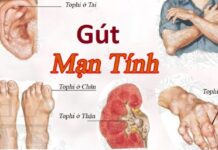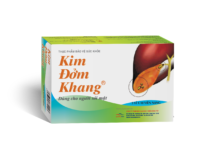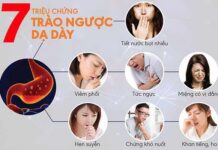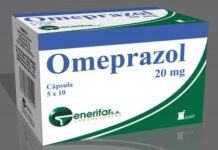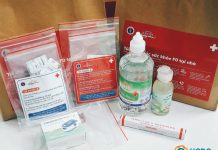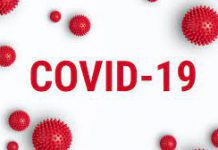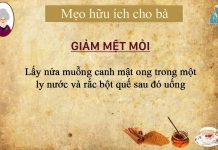Tôi là bác sĩ chuyên khoa cơ xương khớp ngành Đông Y – châm cứu.

Tôi cũng là người ham mê bóng đá, và đã biết đến diễn đàn bóng đá từ lâu.
Tôi có 1 loại cao dán đặc biệt, chuyên chữa trị bong gân cấp tính (không đứt gân toàn phần hoặc bán phần). Nghĩ rằng có lẽ sẽ rất nhiều anh em yêu bóng đá đôi khi bị bong gân, không biết chữa trị cách nào. Tôi đăng tin lên đây, hy vọng có thể giúp đỡ được gì chăng.
Loại cao dán này là của Tây Tạng, tôi phát hiện ra do 1 lần bong gân được anh em bạn bè đi học Trung Quốc về gửi cho 5 lá. Tôi dán 3 lá thì gần như khỏi, có thể đá bóng trở lại. Còn lại 2 lá dán nốt chắc khỏi hẳn nhưng nghĩ tiếc để dành.
Hiện nay tôi làm công tác châm cứu trị các bệnh đau cơ xương khớp, vậy là liên hệ với anh bạn bên Trung Quốc, mỗi khi có ai về là xách theo về cho, để hỗ trợ điều trị bệnh nhân của mình.
Thi thoảng có người bị bong gân,tôi cho họ dán 2 – 4 lá là khỏi. Mỗi lá dán 24h, tức là từ 2 – 4 ngày là khỏi.
Hiệu quả của loại cao này đến bây giờ chính tôi cũng chưa hết kinh ngạc.
Tôi xin trình bày 1 liệu trình chữa bong gân từ lúc vừa bị trên sân như sau:
Bước 1: Chườm đá 20 phút + Bất động.
Bước 2: Lau khô rồi dán cao
Bước 3: Cố định khớp bị bong gân bằng băng thun.
Lưu ý: + Hạn chế tối đa cử động khớp bị bong gân
+ Mỗi lá cao dán được 24h, bóc ra rửa, lau khô dán tiếp cho tới khi hết đau là khỏi (khoảng 2 – 5 lá cao tùy tình trạng nặng nhẹ)
+ Thể đứt gân toàn phần hoặc bán phần thì cao chỉ có tác dụng hỗ trợ giảm sưng đau ban đầu, cần phẫu thuật nối gân.
+ Tuyệt đối không bôi dán những loại cao dầu nóng, bóp rượu nóng, chỉ khiến khớp bóng gân thêm sưng phù, kéo dài thời gian hồi phục.
Kính mong ban quản trị tạo điều kiện để nhiều anh em biết được cao tốt mà chóng khỏi bong gân. Nhất là trong thi đấu giải, cần sớm hồi phục để thi đấu.
Giá của cao có phần hơi đắt, vì đây là loại cao đắt nhất Trung Quốc, nên tôi cũng không biết làm thế nào. 60.000 đồng / 1 lá.
Với giá này có lẽ anh em sinh viên sẽ khó lòng sử dụng.
Thôi thì có thứ chữa bong gân tốt, tôi cứ đăng lên đây. Mong ban quản trị xem xét.
Nếu là anh em sinh viên không có tiền mua cao dán này, thì bỏ qua bước 2 dán cao, chỉ cần bước 1 và bước 3. Thời gian hồi phục sẽ lâu hơn nhiều tùy theo thể lực và mức độ chấn thương. Thông thường nhanh thì 2, 3 tuần, chậm thì vài tháng. Chắc cái này anh em quá rõ.
Còn như đi đắp lá của cụ Lang nào đó thì cũng khiến thời gian hồi phục nhanh hơn bình thường (2 – 4 tuần) nhưng cũng không thể nhanh như dùng loại cao dán này. Ngoài ra nếu không sử dụng cao này thì bôi mật gấu cũng rất tốt, rất chóng khỏi (1 – 2 tuần nếu có mật gấu xịn).
– Bác sĩ Hùng Minh – Phòng châm cứu Đông Hưng – 86 Tuệ Tĩnh HN – ĐT: 0919938998
Nguồn: Cheezheng Pain Relieving Plaster
For 10 years by the use of 16 China State Sport Teams, over 2000 medium size hospitals and 35O million customers in China, the Cheezheng pain Reliving Plaster Shows high function on temporarily relieve minor aches and pains of muscles and joints associated with athletic injuries bruises, sprains and strains, rheumatic pains, stiffnecks and shoulders, backaches, muscular fatigues and archritis.
Cheezheng Pain Relieving Plaster (CPRP), refined from pure natural herbs from Qinghai-Tibetan Plateau, is processed under high-tech vacuumed hypothermic and dehydrated conditions. It contains extremely active ingredients as external therapy for promoting blood circulation and removing stasis to effectively relieve pains on acute muscular contusions or injuries within 24 hours. It has also proven efficacy as reliever for chronic pains after 24 hours of application. CPRP has also proven effects as reliever for chronic pains after 24 hours of application. CPRP is formulated as a rectangular medicinal pad based on a hypoallergenic adhesive.
The active ingredients in CPRP include: Phlomis rotate benth, Myricaria germanica (L.), Oxytropis falcate bge.
Mechanism of Action: CPRP is a nonsteroidal plaster for external use with composite Tibetan herbal medicines that exhibit anti-inflammatory and analgesic activities in animal models. The mechanism of action of CPRP is believed to be due to the absorption of extremely active herbal ingredients through skin to improve blood circulation by removing blood stasis at the affected areas in accordance to the Chinese medicine therapeutics. CPRP does not contain stimulant and toxic materials. In clinical trial studies, CPRP reduced the swelling parts and multiplicity of inflammatory without causing any side effects that are common in patients treated with orally-taken nonsteriodal anti-inflammatory drugs (NSAIDs) as advanced renal disease, serious gastrointestinal toxicity such as bleeding, ulceration, and perforation of the stomach, small intestine or large intestine.
Osteoarthritis (OA): CPRP has demonstrated significant reduction in joint tenderness/pain and joint swelling compared to placebo. CPRP was evaluated for treatment of the signs and the symptoms of shoulder periarthritis, tennis elbow, hyperosteogency in approximately 60 patients aged 40 and older in placebo- and active-controlled clinical trials of up to 12 weeks duration. In patients with OA, treatment with 1 plaster for acute cases or 5 plasters for chronic cases resulted in improvement in Chinese traditional medicine osteoarthritis index, a composite of pain, stiffness, and functional measures in OA. In two 12-week studies of pain accompanying OA flare, applications of 1 plaster for acute cases or 5 plasters for chronic cases provided significant reduction of pain within 24-48 hours respectively and was shown to be superior to placebo in these studies.
Lumbago: CPRP has demonstrated significant reduction in pains associated with lumbar muscle strain, prolapse of lumbar intervertebral disc and lumbar sprain compared to placebo. CPRP was evaluated for treatment of the signs and symptoms of lumbago in approximately 30 patients in placebo- and active-controlled clinical trials of up to 12 weeks in duration. With applications of 5 plasters by each patient for 5 days provided significant reduction in pains and was shown to be superior to placebo in these studies by using Chinese traditional medicine osteoarthritis index, a composite of clinical, laboratory, and functional measures in lumbago抯 assessment.
Acute and Chronic Soft Tissue Injuries: CPRP was evaluated to reduce the symptoms of pain and swelling. A randomized single-blind placebo-controlled study of 16 weeks in duration was conducted in 4 hospitals in Shanghai in 90 patients with an average age of 44.85 with acute sprains on ankle and other chronic injuries. Results of the study observed the CPRP was statistically superior to placebo after 3 days of treatment to each patient. (See Table 1.)
|
Table 1
Percent Change of Efficacy after 3 CPRPs?Application
|
|
Fully Recovered
|
Significantly Effective
|
Effective
|
Not Effective
|
Rate of Significance
|
Total Rate of Effectiveness
|
|
Controlled
|
6
|
51
|
36
|
3
|
63.4%
|
97.8%
|
|
Placebo
|
0
|
8
|
20
|
2
|
26.67%
|
96.66%
|
|
Significantly different from placebo p < 0.01.
3 CPRPs for 3 days of application in succession are the recommended doses.
|
Special Studies
Table 2 summarizes data from 3-day studies that enrolled patients in whom acute sprain injuries revealed symptoms of pain relief by CPRP treatment.
Table 2
Comparison of Pain Symptoms of 30 Patients from 3-Day Serial Observation Studies in Acute Sprain Patients
|
|
Before Treatment
|
Day 1
|
Day 2
|
Day 3
|
|
|
Controlled
|
2.40 ?.62
|
1.46 ?.56
|
1.07 ?.58
|
0.30 ?.47
|
|
Placebo
|
2.27 ?.69
|
1.73 ?.58
|
1.20 ?.61
|
0.87 ?.57
|
|
Press Pain
|
Controlled
|
2.53 ?.51
|
2.13 ?.51
|
1.50 ?.51
|
0.97 ?.56
|
|
Placebo
|
2.47 ?.51
|
2.20 ?.71
|
1.77 ?.68
|
1.43 ?.63
|
|
|
Controlled
|
2.17 ?.65
|
2.03 ?.62
|
1.50 ?.50
|
0.97 ?.41
|
|
Placebo
|
2.20 ?.66
|
2.27 ?.65
|
1.93 ?.58
|
1.53 ?.68
|
|
|
Controlled
|
2.03 ?.76
|
1.53 ?.63
|
1.13 ?.79
|
0.47 ?.57
|
|
Placebo
|
1.93 ?.83
|
1.70 ?.84
|
1.33 ?.68
|
1.07 ?.78
|
|
Significantly different from placebo p < 0.05.
|
INDICATIONS AND USAGE
CPRP is indicated:
1) For relief of the signs and symptoms of rheumatoid arthritis in adults.
2) For relief of swelling and inflammatory due to acute and chronic sprains and contusions, athletic injuries, stiff shoulders, muscular fatigue and stress.
3) For relief of osteoarthritis-associated signs and symptoms of arthritis, lumbago, shoulder periarthritis, tennis elbow and hyperosteogency.
CPRP should not be applied around open wounds and irritated skin.
CPRP should be applied with caution to patients who have demonstrated anaphylactic-like skin reactions to drugs and cosmetics (see WARNINGS and PRECAUTIONS).
Allergic reactions have occurred in patients without known prior exposure to CPRP. During the controlled clinical trials, it was reported that 10% of patients had exhibited skin allergic reactions such as rash or eruption by using CPRC in comparison to 16.67% in placebo. After suspension of CPRP therapy promptly or receiving appropriate treatment will see this symptom complex faded away. Emergency help should be sought in cases where severe skin irritation occurs.
In pregnancy CPRP should be used with caution and strictly under a doctor抯 advice.
General: For external use only. Patients with allergic reactions to drugs or cosmetics should consult a physician before use and appropriately reduce the application hours if applicable. Distilled water can be used in place of the attached diluents to minimize risk of allergic reactions, which will not reduce the efficacy.
Information for Patients
Discontinue use of CPRP if phlyctenule, rashes or eruptions are observed. Patients should promptly report these signs or symptoms to their physicians.
Patients should also be instructed to seek immediate help in the case of severe skin irritation (see WARNINGS).
In placebo- or active-controlled clinical trials, the discontinuation rate due to adverse events was 2% for patients receiving CPRP and 5% for patients receiving placebo. Among the most common reasons for discontinuation due to adverse events in the CPRP treatment groups was allergic reaction in skin rashes and phlyctenule.
For symptoms mentioned in Indication and Usage, the lowest dose of CPRP should be one piece for acute injuries and traumatic pains as one treatment period for 24 hours. For chronic casualties, it is recommended that 5 plasters be applied continuously for 5 days as a treatment period. Before application, clean and dry the affected area(s), peel off the protective film and put the diluents contained in the attached plastic tube evenly on the middle of the medicine pad, apply the plaster on the affected area(s) and press the plaster edges lightly.
CPRP is wrapped in an independent plastic package for each piece and supplied as:
China SFDA Drug Approval Number
|
Size
|
|
Z54020113
|
90mmX120mm
|
Store in a cool and dry place away from direct sunlight.
Different package designed supplied to different countries according to the local regulations. For details, please email to intl@qzh.cn.
Rx and OTC in China.
Formulated by Tibet Cheezheng Tibetan Medicine Co.Ltd., Lab, Tibet, China
Mfd. by Tibet Cheezheng Tibetan Medicine Co.Ltd., Tibet, China
Marketed by International Department, Tibet Cheezheng Tibetan Medicine Co.Ltd.,


